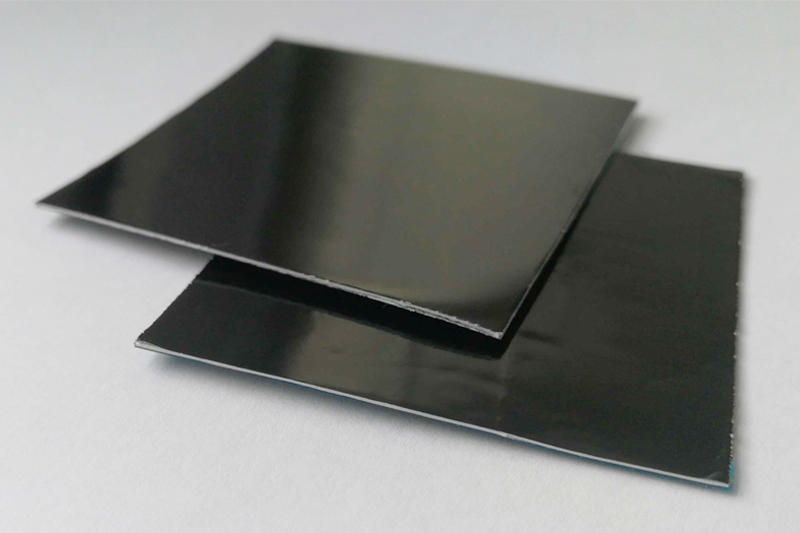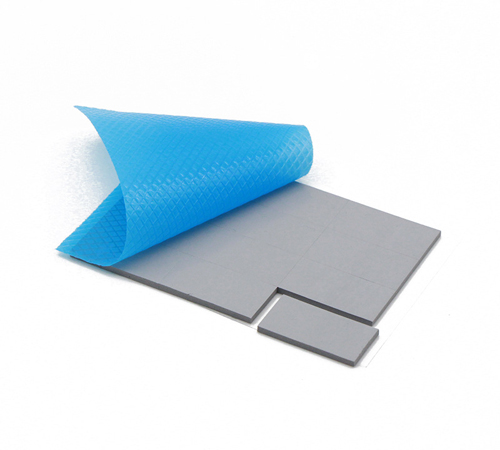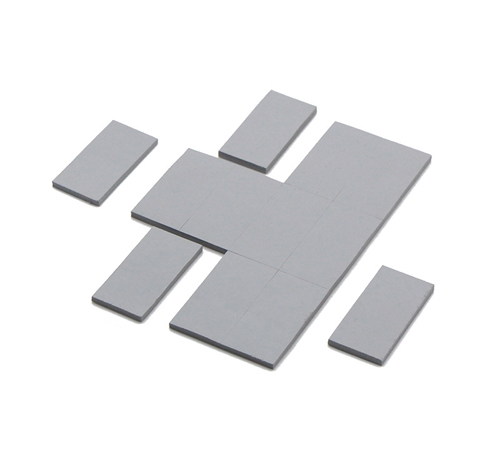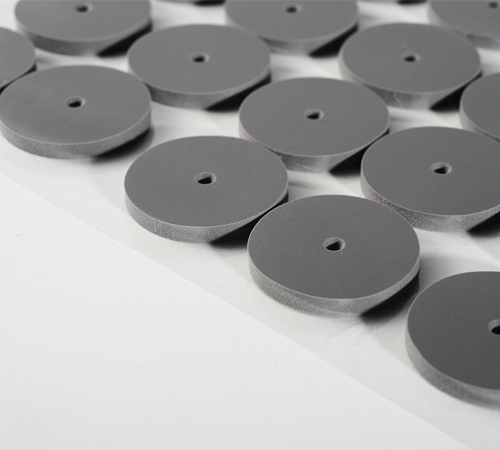What is Thermal Energy Storage Material?
Author:NFION
Date:2025-04-23 15:24:51

Against the backdrop of increasing energy scarcity and growing environmental awareness, energy storage technology, as a crucial support for improving energy utilization efficiency and promoting the development of renewable energy, has garnered widespread attention. Among the various energy storage methods, thermal energy storage (TES) stands out due to its relatively low cost and high technological maturity, demonstrating significant application potential in industrial waste heat recovery, solar thermal utilization, building energy conservation, and other fields. The key to achieving efficient thermal energy storage lies in the performance of thermal energy storage materials.
I. Concept and Importance of Thermal Energy Storage Materials
Thermal energy storage materials are substances that can absorb, store, and release thermal energy in the form of sensible heat, latent heat, or thermochemical heat when needed. They are the core components of thermal energy storage systems, and their thermophysical properties, such as specific heat capacity, thermal conductivity, latent heat of fusion, phase change temperature, and thermal stability, directly determine the storage capacity, charging/discharging rate, efficiency, and reliability of the thermal energy storage system. High-performance thermal energy storage materials can significantly improve the energy density of thermal energy storage systems, reduce equipment size, lower operating costs, and ultimately promote the widespread application of thermal energy storage technology.
II. Principles of Thermal Energy Storage Materials
The thermal energy storage process of thermal energy storage materials is essentially a process of energy conversion and storage. According to the physicochemical mechanisms of thermal energy storage, thermal energy storage materials mainly store heat through the following three basic methods:
1. Sensible Heat Storage: This is the most direct and common method of thermal energy storage. Sensible heat storage materials absorb and store heat by increasing their own temperature and release heat as their temperature decreases. The amount of heat stored is directly proportional to the material's specific heat capacity, mass, and temperature change, which can be expressed by the following formula:
Q = m*cp*ΔT
Where Q is the stored heat, m is the mass of the material, cp is the specific heat capacity of the material, and ΔT is the temperature change of the material. Commonly used sensible heat storage materials include water, oil, rocks, gravel, concrete, and various metals.
2. Latent Heat Storage: Latent heat storage materials utilize the large amount of heat absorbed or released during the phase change of a substance (such as solid-liquid, liquid-gas, solid-solid phase change), while their own temperature remains essentially constant. Compared to sensible heat storage, latent heat storage has a higher energy density because the latent heat value during the phase change is usually much larger than the sensible heat value under the same temperature difference. Commonly used latent heat storage materials mainly include phase change materials (PCMs), such as paraffin wax, fatty acids, inorganic salt hydrates, and eutectic mixtures.
3. Thermochemical Heat Storage: Thermochemical heat storage utilizes reversible chemical reactions to store and release thermal energy. When an endothermic reaction occurs, heat is stored as chemical energy; when an exothermic reaction occurs, chemical energy is converted into heat and released. Thermochemical heat storage has a very high theoretical energy density and can achieve long-distance and long-term heat storage and transport. Common thermochemical heat storage systems include hydrated salts, metal hydrides, ammonia decomposition and synthesis, etc.
III. Basic Types of Thermal Energy Storage Materials
Based on the above thermal energy storage principles, thermal energy storage materials can be mainly classified into the following types:
1. Sensible Heat Storage Materials:
Liquid Thermal Storage Materials: Such as water, heat transfer oil, molten salts, etc. Water is inexpensive and has a high specific heat capacity, but its operating temperature range is limited; heat transfer oil has a wider operating temperature range but higher cost; molten salts have high operating temperatures and storage density, suitable for high-temperature heat storage.
Solid Thermal Storage Materials: Such as rocks, gravel, concrete, ceramic materials, metal materials, etc. These materials are relatively low in cost and have good thermal stability, but their storage density is usually lower.
2. Latent Heat Storage Materials (Phase Change Materials):
Organic Phase Change Materials: Such as paraffin wax, fatty acids, etc. They have the advantages of a wide phase change temperature range, no supercooling phenomenon, and good chemical stability, but their thermal conductivity is low and they are flammable.
Inorganic Phase Change Materials: Such as inorganic salt hydrates, nitrates, chlorides, etc. They have high storage density and thermal conductivity, but may have problems such as supercooling, phase separation, and corrosion.
Eutectic Mixtures: By mixing two or more substances, mixtures with specific phase change temperatures can be formed, and the phase change temperature can be customized according to needs.
3. Thermochemical Heat Storage Materials:
Solid-Gas Reaction Type: Such as metal hydrides, hydrated salts, etc. They have high storage density and reversibility.
Liquid-Gas Reaction Type: Such as ammonia decomposition and synthesis, methanol steam reforming, etc. Suitable for large-scale heat storage and long-distance transportation.
Solid-Solid Reaction Type: Reversible redox reactions between certain metal oxides.
IV. Main Functions of Thermal Energy Storage Materials
As the core of thermal energy storage systems, thermal energy storage materials play a crucial role in various fields:
1. Improving Energy Utilization Efficiency: By storing waste heat generated during industrial production and waste heat discharged from power plants, and reusing it when needed, reducing energy waste and improving overall energy utilization efficiency.
2. Promoting the Utilization of Renewable Energy: Solving the intermittency and volatility problems of renewable energy sources such as solar and wind power, achieving stable energy output and on-demand supply, and increasing the proportion of renewable energy in the energy structure. For example, in solar thermal power generation systems, thermal energy storage materials can store solar energy collected during the day for power generation at night or on cloudy days.
3. Achieving Building Energy Conservation: In the building sector, thermal energy storage materials can be applied to heating, cooling, and hot water systems, using off-peak electricity or solar energy to store cold and heat, and releasing it during peak hours during the day, reducing building energy consumption and operating costs, and improving living comfort.
4. Optimizing Industrial Processes: In some industrial processes, thermal energy storage materials can be used to preheat raw materials and recover process heat, improving production efficiency and reducing energy consumption.
5. Developing New Energy Systems: Providing key technological support for the development of new energy systems, for example, combined with heat pump technology to achieve efficient heating and cooling; applied to distributed energy systems to improve the reliability and flexibility of energy supply.
V. Conclusion and Outlook
Thermal energy storage materials are the key to achieving efficient thermal energy storage, and their performance directly affects the efficiency and application prospects of thermal energy storage systems. With the increasing demand for sustainable energy development, the research and development of high-performance, low-cost, and environmentally friendly thermal energy storage materials is particularly important. Future research directions will focus on the exploration of new thermal energy storage materials, the improvement of the performance of existing materials, the optimization of thermal energy storage system design, and the expansion of the application of thermal energy storage technology in a wider range of fields. It is foreseeable that with the continuous advancement of materials science and engineering technology, thermal energy storage materials will play an increasingly important role in building a clean, efficient, and sustainable energy system.
 CN >
CN >



